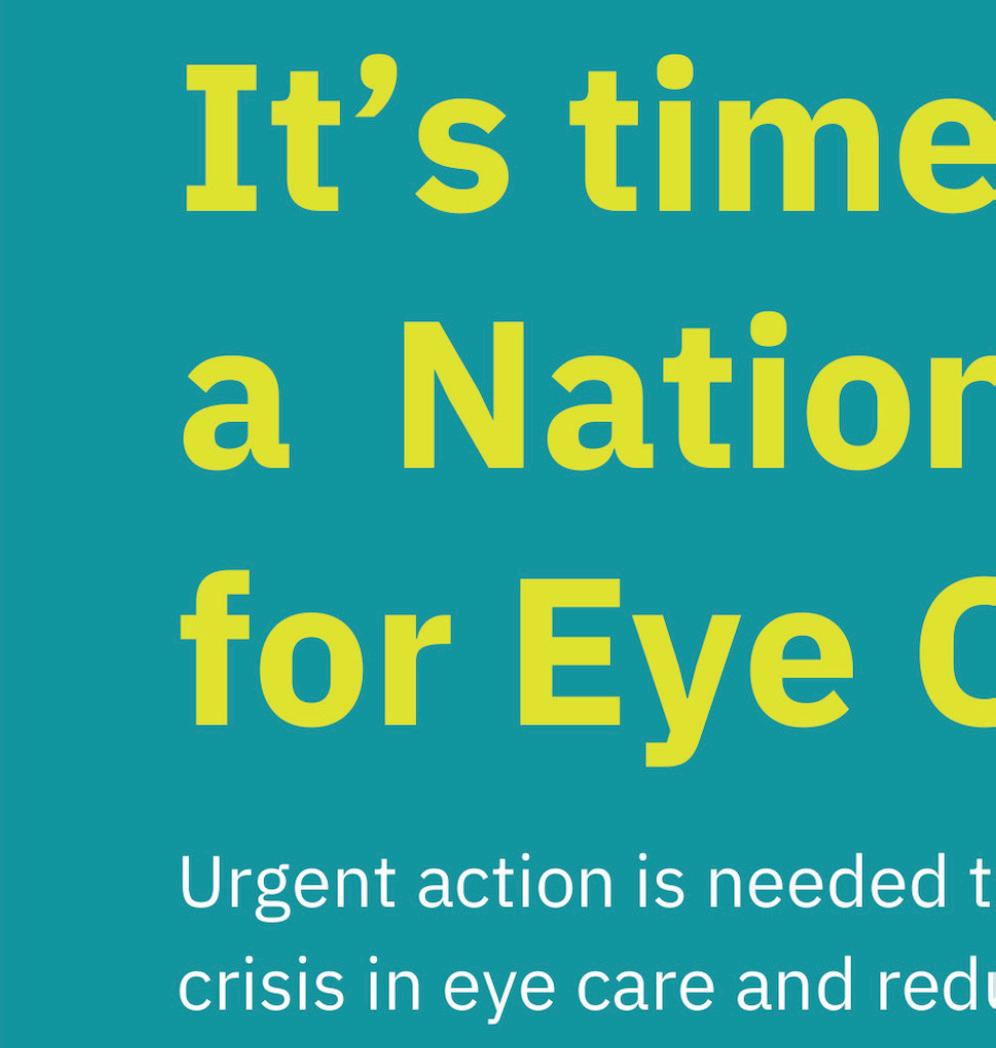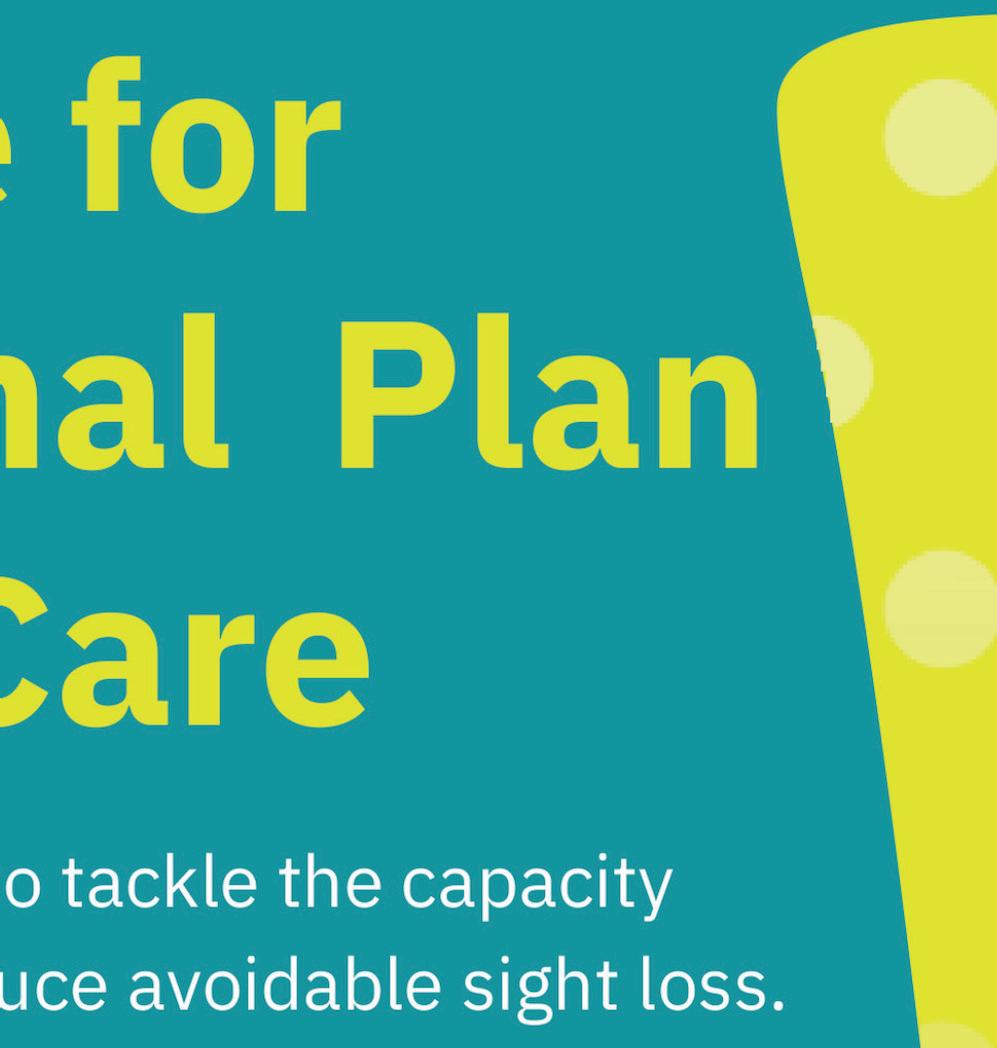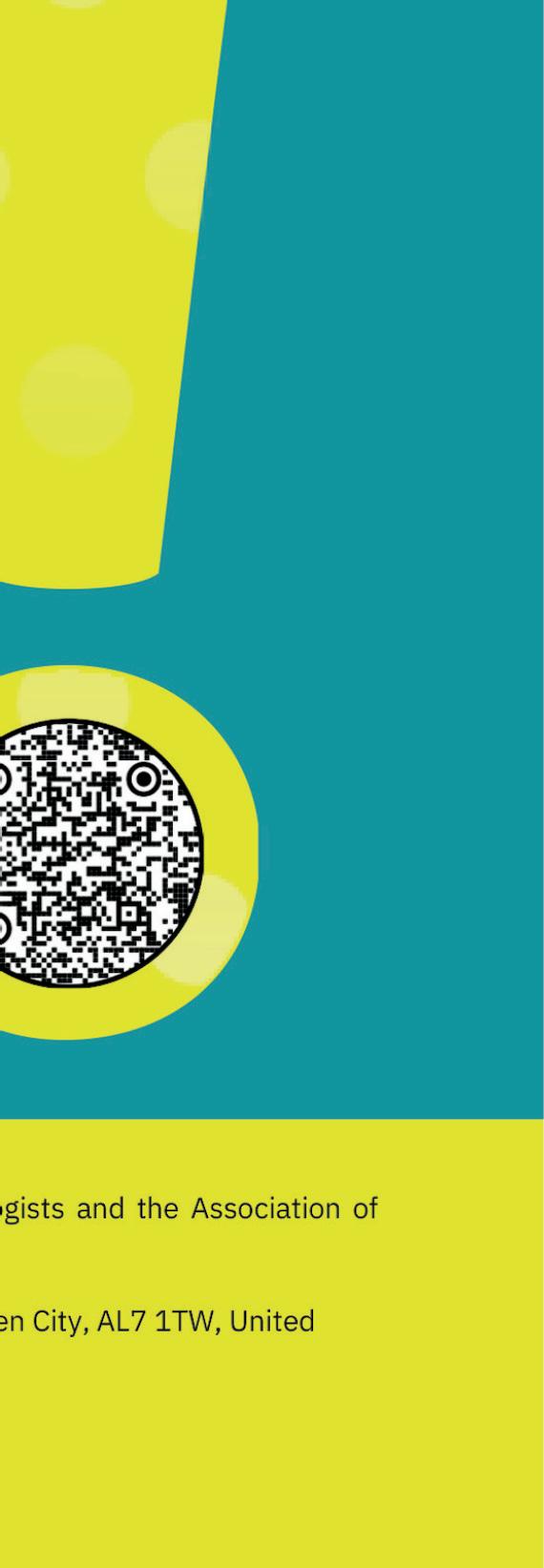
7 minute read
Managing traumainduced anterior uveitis
from OT April/May 2023
by TheAOP


Advertisement


OT presents a clinical scenario to three of its resident IP optometrists. This edition: managing unilateral, trauma-induced acute anterior uveitis
OT’s IP panel
Ceri Smith-Jaynes, OT clinical multimedia editor, IP-qualified: 2018
Farah Topia, AOP clinical adviser, IP-qualified: 2016
Kevin Wallace, AOP clinical adviser, IP-qualified: 2012.
The question:
Recently, a patient presented at my practice with unilateral, trauma-induced acute anterior uveitis. Dilated examination revealed a few inflammatory cells in the anterior chamber, however the vitreous and fundus were healthy. I’m interested in hearing how you would manage this patient?
OT’s panel says...
Ceri Smith-Jaynes (CSJ): The first thing I would do is establish what happened and when. Are we talking squash ball at high-speed, or someone’s finger poked in their eye? A history would include questions about vision, pain, photophobia and diplopia.
Also, I’d ask about previous iritis and health conditions, for instance, what if this wasn’t caused by the trauma? Is the anterior chamber reacting because of a corneal abrasion or a biff on the sclera?


Farah Topia (FT): You might want to ask specifically about any auto immune conditions or prior infections. The onset and the duration of symptoms is important in trying to ascertain the underlying cause. If it’s not trauma related, an underlying systemic disease has to be considered, particularly if the patient mentions previous episodes. A full history is key and, as Ceri has said, if it does seem to be trauma-related, the type of trauma will help give an idea of what else you need to be looking out for.
CSJ: Intraocular pressure (IOP) is important for two reasons: it can go up or down in trauma, and if I do end up prescribing a steroid, I’ll want a baseline measurement.
FT: The IOP is also helpful to rule out angle closure as a differential diagnosis.
CSJ: I assume we checked motility, looked at the pupils, and measured visual acuity before dilating.
FT: Even if the trauma is to one eye, it’s important to check both eyes as the inflammatory response can affect both.
CSJ: I’d have a look for any synechiae or even the imprint of the iris in the anterior lens from the force of a blow. I’d also check for hyphaema, keratic precipitates and hypopyon.
I like to use the Standardisation of Uveitis Nomenclature (SUN) Working Group grading scheme to record cells or flare, so I can quantify any improvement (or the ophthalmologist can, if I am referring).

In my area, we have an agreement with the local eye clinic that independent prescribers will assess iritis, start treatment and refer to the hospital for follow-up. I’d give the eye clinic a call first, but if there is no corneal abrasion, it’s likely I’d prescribe 1% cyclopentolate three times a day and 1% prednisolone four times a day and refer on for followup in a few days. The patient may need to take their usual over-the-counter painkillers. Traumatic iritis tends to respond more quickly to steroids and can be tapered more quickly than usual acute iritis. I’m not able to do gonioscopy, which I think is important in some trauma cases to rule out angle recession, so I’d be glad for the ophthalmologist’s view. They can be on the lookout for trauma induced glaucoma and take a second look for any retinal breaks too.
FT: I agree with Ceri’s management. If there is trauma involved, you have to consider other pathology compared to a simple anterior uveitis. With anything impacting the eye, you should counsel the patient on retinal detachment signs and symptoms just so they know what to look out and what to do if their symptoms change.

CSJ: Oh, and don’t forget to give the patient advice about eye protection before they leave.
Kevin Wallace: I agree with Ceri and Farah’s comprehensive options already presented and would manage my patient in the same way. I am glad that the patient was dilated, as it’s important to assess the internal eye in cases of a significant impact. It is always good practice to finish by recommending appropriate safety eyewear to reduce the chance of this sort of injury happening again.
For more information
If you are unsure about managing a scenario in practice, email: regulation@aop.org.uk
If there is a scenario that you would like to hear our IP optometrists’ views on, email: lucymiller@optometry.co.uk









Six months after becoming co-owner of the independent where she had worked as practice manager and optical assistant (OA) for 18 years, Donna Lowther has not come to terms with what she has achieved.
Her slight state of shock is understandable: after nearly two decades at County Durham independent, Sight Ltd, 2022 saw her career move up a gear with a dispensing optician (DO) course via Bradford College.
The results confirming her DO qualification came through on 30 September 2022, and on 1 October, she officially became the practice’s co-owner.
“I was practice manager and then went on to do the DO course so that I could go into directorship,” she explained. “I put it off for years. I never thought I could be a DO. But the previous optometrist said, ‘you can do this.’ He kept pushing and I was like, ‘okay. I’ll give it a go.’ I ended up with a distinction, so I thought, ‘Oh, I knew something then.’”
She shares the business with the resident optometrist, whom she already worked alongside.
“It was an opportunity: rather than [the previous owner] sell to somebody we didn’t know, we got our heads together,” she said.
In terms of branding, she said, “we’ve kept everything the same. We are a good community. Our patients know us on first name terms. It didn’t make sense to make
Donna Lowther, new co-owner of Peterlee independent practice, Sight Ltd, on why she never expected to succeed in her ‘pipe dream’ of business ownership it look like a new business, because it’s not. It was founded in 1984, so it’s got a personal patient base.”

Decision maker
Speaking about her route into ownership, she said: “It was a pipe dream. I’ve still got impostor syndrome. I feel like it’s someone else’s life that I’m living right now.
“It is the goal, when you go into optics, to do something like this. To be given the opportunity is beautiful. I just love it.”
She added: “I always knew I wanted to go bigger than what I was doing, so I could make the decisions on what was best for patients. Since doing the DO course, I’m quite big on low vision. I’ve got together with [visual aid supplier] Associated Optical and we’re hosting events. It’s something I wouldn’t have been able to do before. Now, I can support the community in different ways.”
The value of relationships
Her move into management has seen her make an effort to prioritise relationships with her staff. “If I’ve got a happy team, I know patients are going to get looked after,” she said, adding: “The girls know that they can text or ring, at any time. It’s a bit tricky to go from friend to boss, but I’ve made sure that they know that I’m still me. If I’ve got any concerns, we’ve got a really good relationship, where I can take it to them too.”
Lowther explained that in the longer-term, she is planning to bring in MiyoSmart to ensure that she can serve younger patients, and will be focusing on ensuring that all her staff have the knowledge to talk about it confidently. For now, though, she is realising that minor tweaks –like putting lights in practice windows – can have a bigger impact than she had expected.
She explained a recent conversation that, based on the fact that the practice has been in its current location since 2000, surprised her.
“The first day I put the lights in the window, I had a guy come in and say, ‘When did you open? I’ve never seen you before,’” Lowther said. “I asked, ‘Well, how have you seen me today?’ He said, ‘because you’ve got lights on.’ They are little things, but they are making a big difference.”
Has her confidence improved through her new venture? Lowther’s answer is clear: “Absolutely. Now, if I’m asked a question, I’m confident with my answer, and I’m confident to support somebody else with similar situations. My confidence is great now, because of this.”
She added: “The flexibility of becoming a business owner is becoming more apparent. Putting my own spin on our practice and being able to juggle work and family life is easier by the day. I’m loving this experience and I’m so grateful I’ve got this amazing opportunity.”
1 Get connections beforehand. Optics is such a small world: you don’t realise who you know. If you can find somebody to help you, it’s definitely worth it
2 Have faith in yourself. That’s the one thing I didn’t have. My confidence was asking, ‘how am I doing this?
I’m a little colliery girl. How do I do things like this?’ I wasn’t born with money or knowledge. Nobody is, really. It’s surreal
3 Go for it. Just go in there and do it. Don’t doubt yourself.









April is Stress Awareness
Month, an event that has been taking place for 21 years – although the conversation around the causes of stress and its impact in both the short and long-term has become more pronounced over the past decade, and even more so recently as a result of COVID-19.

It might be a common topic of conversation – who hasn’t pressed a hand to their temple and muttered “I am so stressed out” on a hectic Tuesday afternoon? – but the reality and nuances of stress make it a broad subject, and one that can often feel too nebulous to practically contend with.
In order to try and address at least part of this huge subject, the AOP and OT have turned their attention to a particular consequence of stress: burnout, which the World Health Organization (WHO) defines as an “occupational phenomenon.”
By classing it in this way, the WHO categorises burnout as a factor that influences health status or contact with health services, but not as a medical condition. It further defines it as “a syndrome conceptualised as resulting from chronic workplace stress that has not been successfully managed.”










